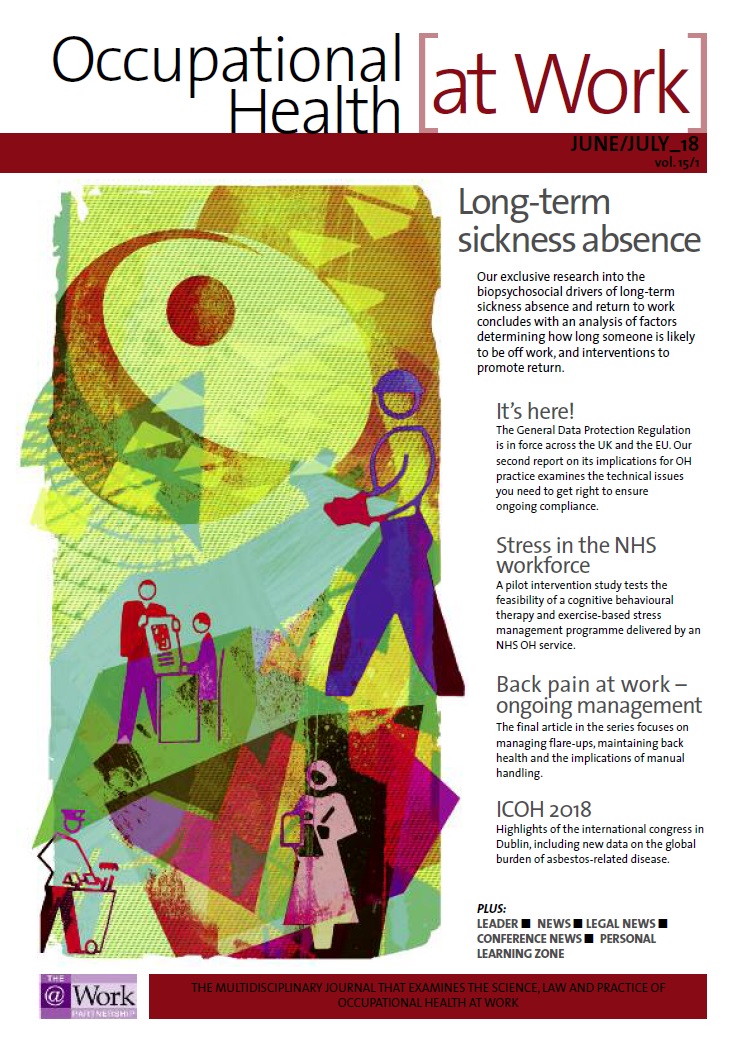June/July 2018 (vol. 15/1)
ContentsFeaturesNewsLegal
NewsResearch DigestResearch PlusCPD
 Long-term sickness absence: a biopsychosocial survey, part 2
Long-term sickness absence: a biopsychosocial survey, part 2
Part 2: the management of long-term sickness absence and the biopsychosocial drivers promoting or hindering return to work
Summary:
The At Work Partnership and The Work Foundation have carried out a major survey of OH professionals regarding the scale and management of long-term sickness absence. Here, the second part of the research report examines the factors facilitating or hindering return to work and the interventions that OH professionals believe are effective in managing longterm sickness absence.
LONG-TERM sickness absence (LTSA) constitutes only a small fraction of sickness episodes but has been estimated to account for three-quarters of total absence costs1. It is consistently cited by occupational health (OH) professionals as one of their biggest priorities for professional practice2,3 and is a burden on society, employers and individuals1. Successful management of LTSA is notoriously complex, with many factors acting as obstacles or facilitators to recovery and return to work4. This research was undertaken, therefore, to provide robust data on the real causes, and the biopsychosocial drivers, of LTSA, as well as the barriers to, and facilitators of, return to work. The research also sought to examine whether or not strategies aimed at reducing LTSA were effective.
Dr John Ballard is editor of Occupational Health [at Work]. Dr Zofia Bajorek and Helen Sheldon were researchers at The Work Foundation when they undertook this research
Author: Ballard J, Bajorek Z, Sheldon H
Occupational Health at Work June/July 2018 (vol. 15/1) pp17-25



